Assignment #2:
Make a press-fit structure
Back to main page
This
time I really tried to document my process.
Phase 1:
Brainstorming
Thinking about what to build for this
assignment, I realized that there are several themes that I want to
incorporate into whatever I end up making:
-
It should have real functionality
and could be useful (at least for me)
-
Each unit would stand on its own
and serve a purpose, but also be scalable/expandable – like a
building block for some larger structure
-
I want to experiment with
different types of press-fit connections – some of them should be
easier to disconnect and some will be more “permanent”.
This could be useful for a more
“directed-disassembly” - if force or pressure is applied to the
structure, the designer can influence which connections will break
first.
-
I really like motion and want to
do something that incorporates some sort of circular motion into the
press-fit structure.
Phase 2: The drawing board
I think that
I'll make a Modular-Expandable-Super-Structured-Wine-Bottle-Holding-Whatchamacallit. Or in short – a
MESS.
The basic unit
will be a folding storage unit that opens up and holds 6 bottles.
These units would be stackable on each other and create a bigger
storage unit. I am wondering if I also want to physically connect
such units on the sides too – but right now I'm not sure a physical
link is necessary since they can just be placed next to each other).
This way your
friendly-neighborhood-wine-enthusiast can start building up his
collection gradually from one unit up to a whole wine cellar...
I've been working with the Open Office
draw program. As was mentioned in class, the most useful feature is
indeed the ability to add and subtract shapes in order to make more
complex ones. The whole design can be done with combinations of basic
circles, triangles, and rectangles.
Some notes to
keep in mind:
Things to look
at:
- How
should the groove be designed to allow for disassembly – how
deep, how wide?
- Should it
be easy to disconnect them by hand, or will it be done with some
tools (like a pair of pliers, etc.


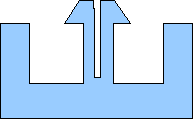
And hold the
“X” beams in the desired position like this:
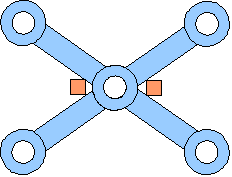
Materials
-
It should be sturdy enough to hold 6 bottles of wine. If the units
are going to be stacked on top of each other, things may get heavy
for the bottom one, so I'll have to see if that's feasible or if I
should add some more support.
-
I guess the final material will be acrylic. I'm pretty sure that
the “X” beams will have to be with the thickest acrylic that I
could find, but maybe other parts can be with a thinner kind.
-
I can start practicing on cardboard and tweak the structure to what
I had in mind. Experimenting with the connectors, though, will
probably have to be done with acrylic, since the type of material
will greatly affect the connectors.
Phase 3:
Experimenting with the basic shapes and materials
Here
are some results of experiments I did with the different materials. I started
with cardboard, and concentrated first on the shapes and features of the
connectors.
It was soon evident that cardboard is not good to test the snap connectors,
since it's too delicate.
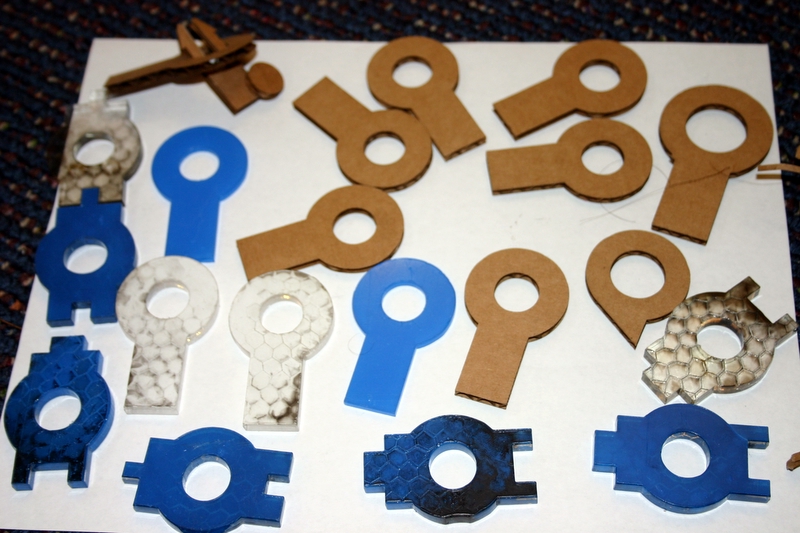

Another thing I realized is that even if I figured out a good shape for the
connector, once I added material to it in order to get the actual shape I wanted
it to be part of, it changed the pressure points and weaknesses of the part, and
it snapped in places I hadn't foreseen originally. Most of these sensitive
points are pretty logical once you think about it, so as I advanced I was able
to better predict which parts would be more sensitive than others and try to
solve it in the design before actually building them.
I
also had many thingies like this left over from the holes of the connectors:
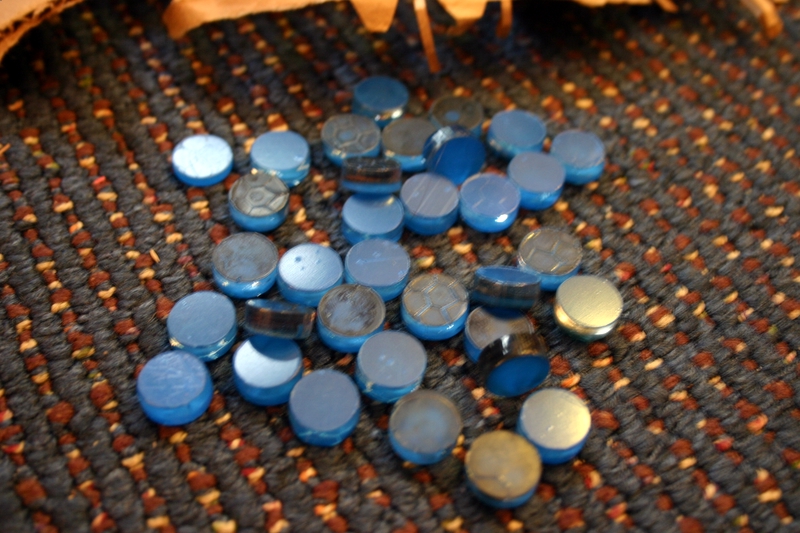
Any ideas what to do with these? (aside from
miniature poker chips)
I also found out that OpenOffice Draw has a neat option to export the drawing
file into a webpage, so here is my
OpenOfficee scratch pad, which also shows how the final design evolved as I
progresses with the experiments.
Phase 4: Assembling it
So
here's the final version. I made a 2 bottle version and a 6 bottle version. Both
seem to hold up pretty nicely under the bottle weight.
Six Bottle Holder:
Open
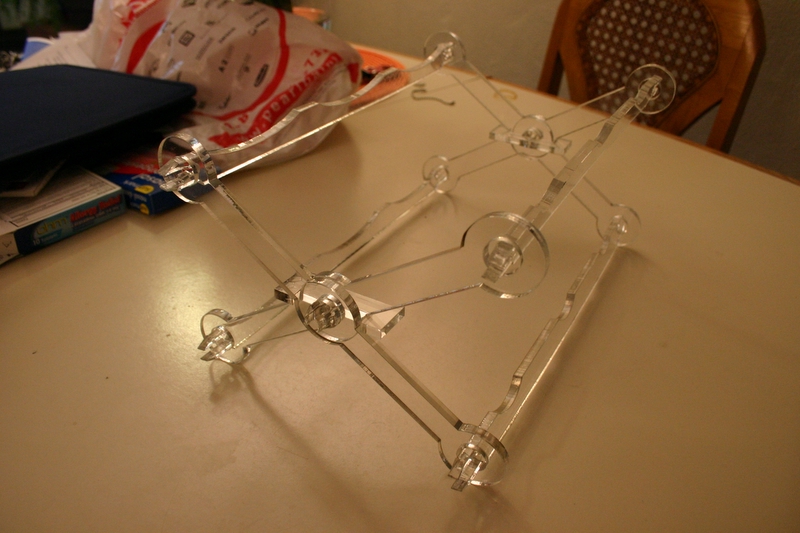
Folded
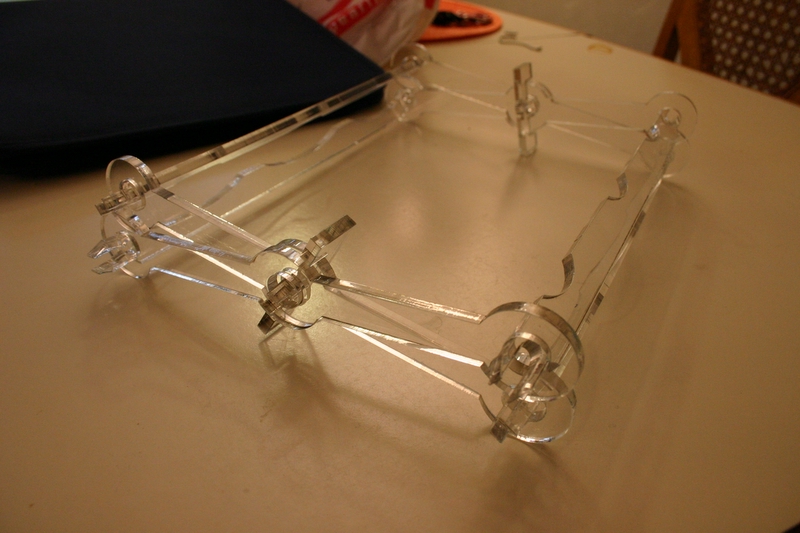
2
Bottle Holder
Open
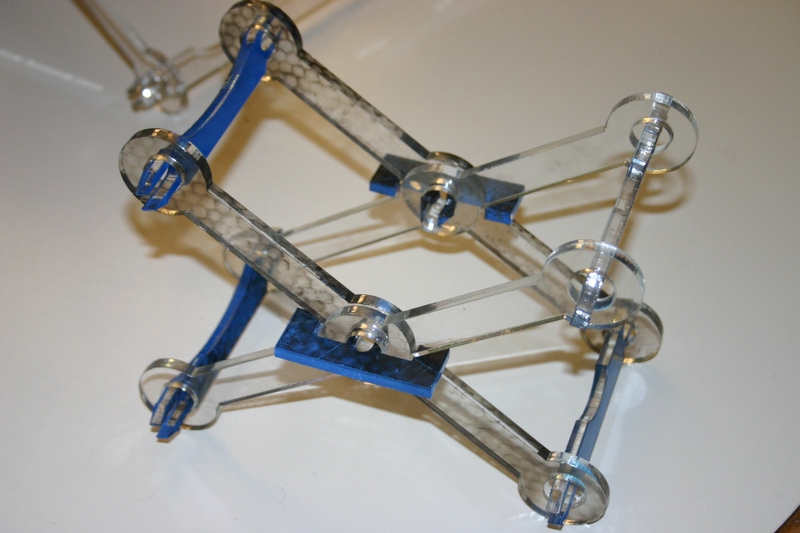
Folded
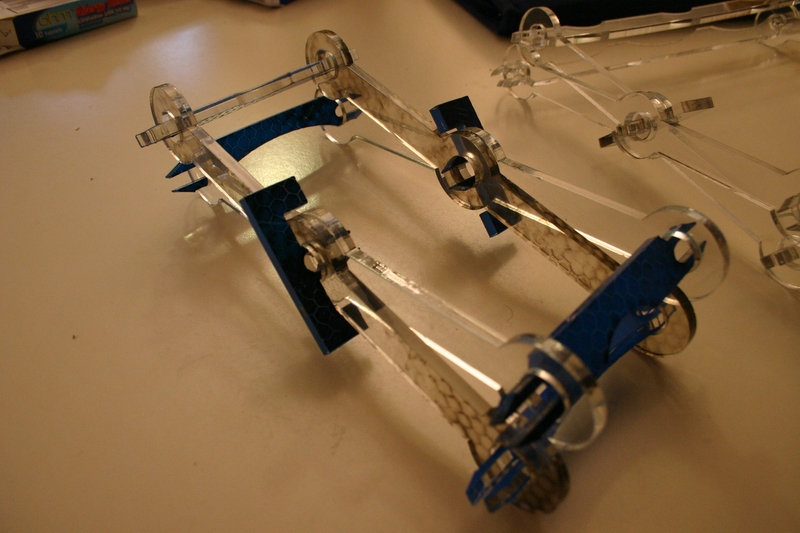
Group photo:
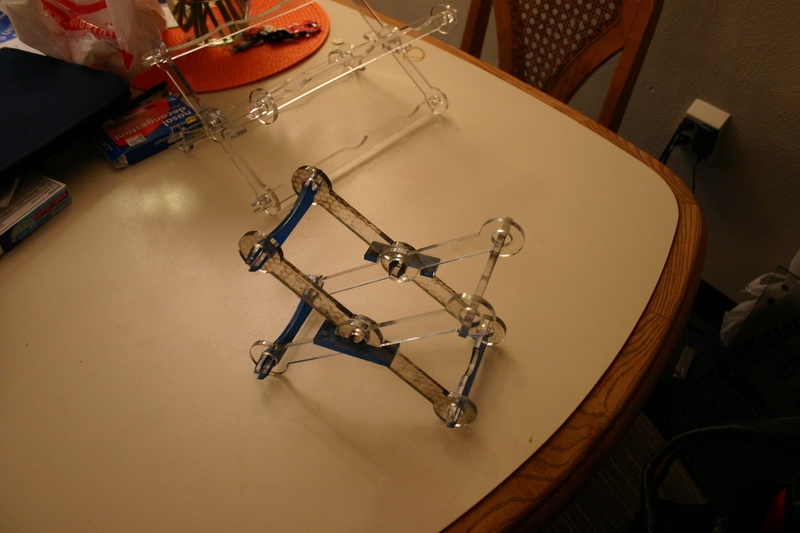
The parts:
Six Bottle Holder
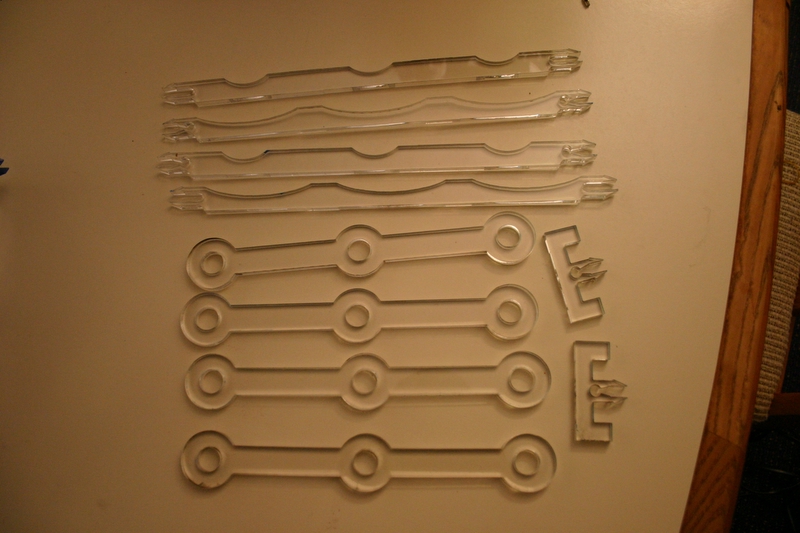
Two Bottle Holder
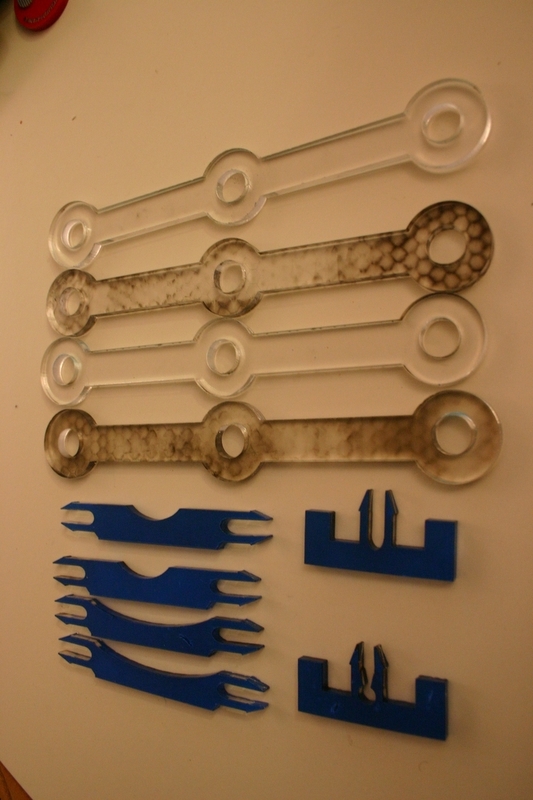
Inter-Holder-Connectors
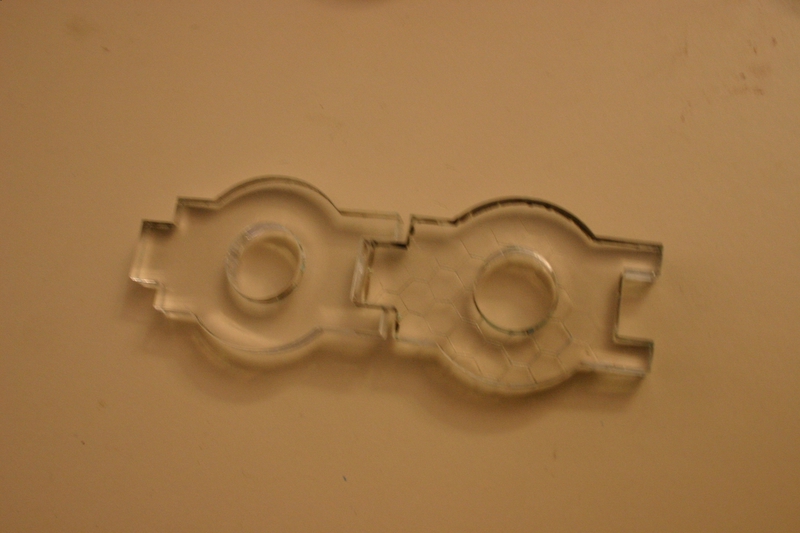
I
ended up doing them as stand-alone connectors. Originally the idea was that I
wanted to save material since if I hard-coded it into the arms of the holder, as
in the original design, I would have to actually manufacture several whole
devices so I can stack them up and see if my angles are correct.
By
making each connector be a standalone, its much easier to test them, and they
can be connected to the basic device and serve the same purpose. Since they can
rotate freely, they can adjust to any angle of the "X" joint, and the units will
stack up vertically.

Phase 5: It actually works!
(I
could only find 4 bottles at home..)
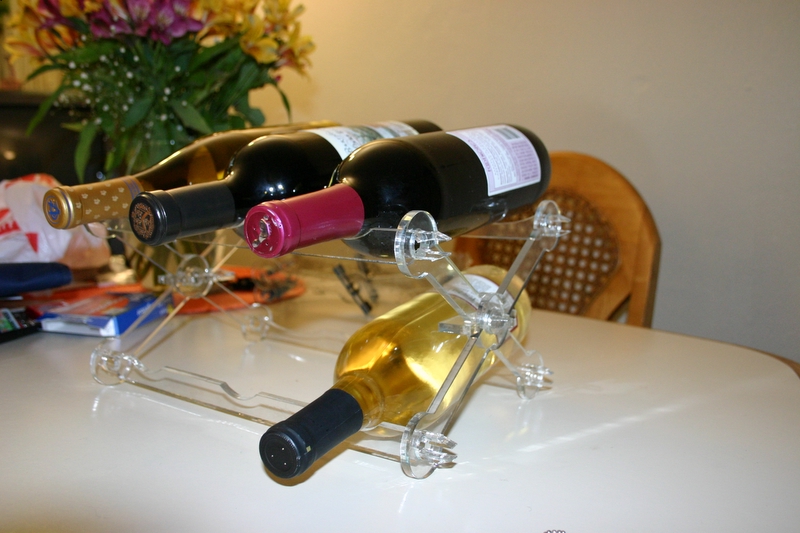
And
after a few sips:
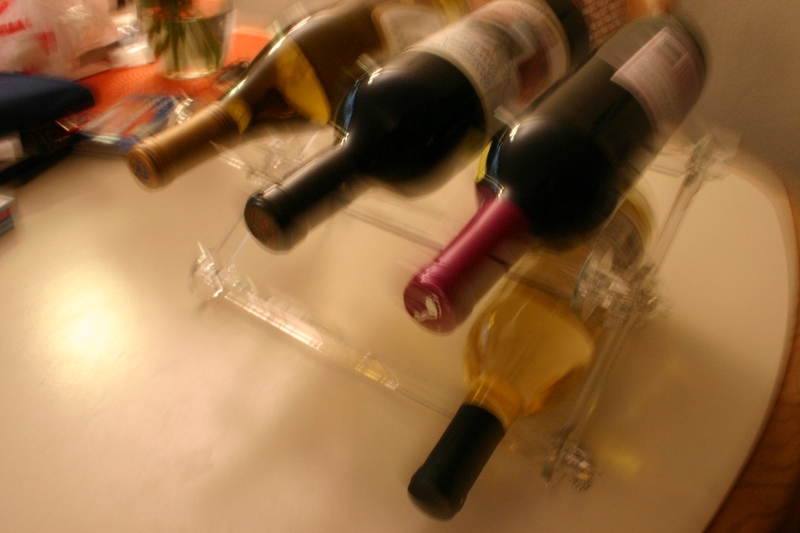
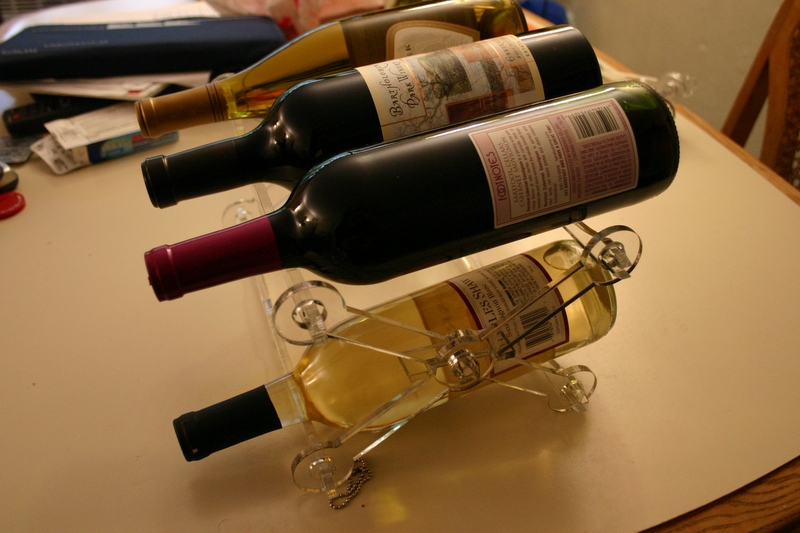
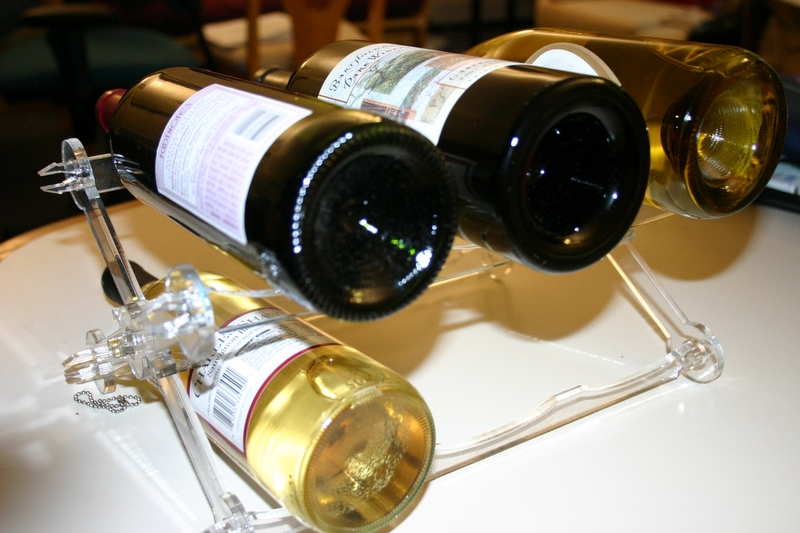
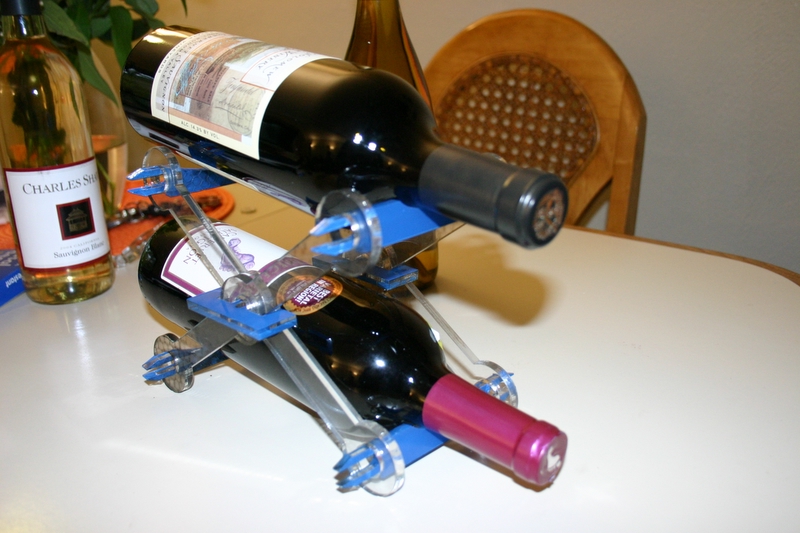
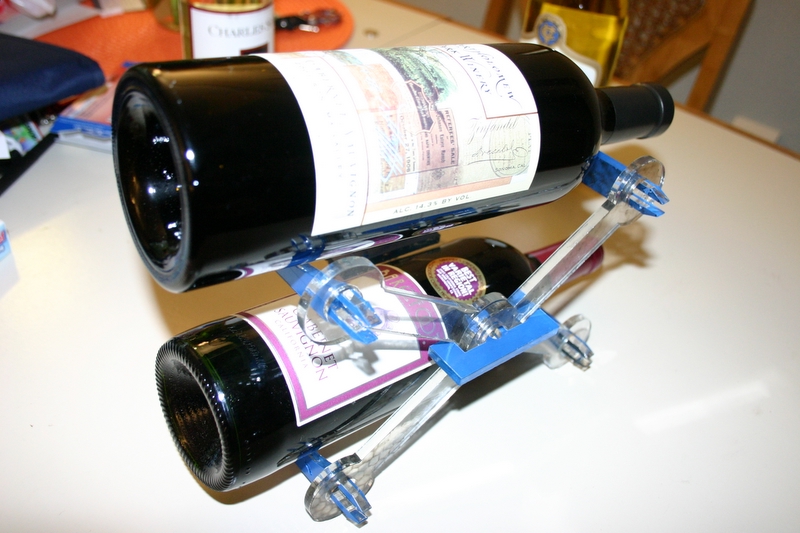
Phase 6: Get more wine
Donations are welcome.




